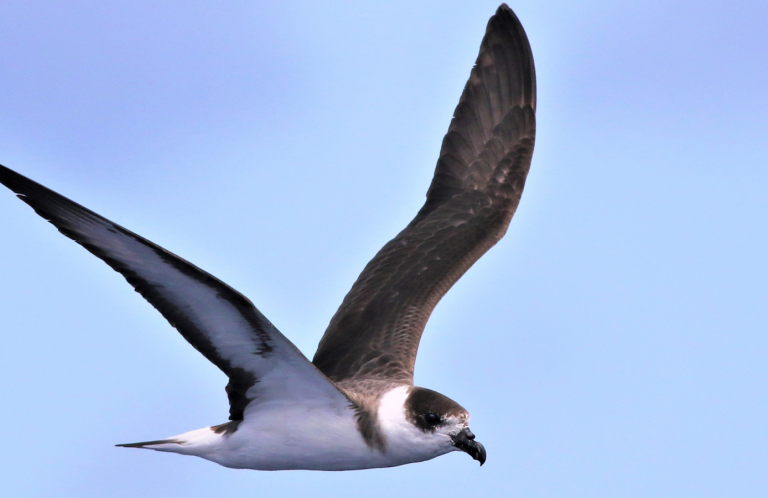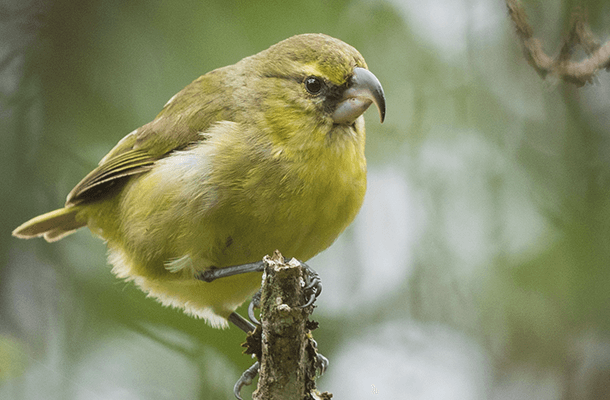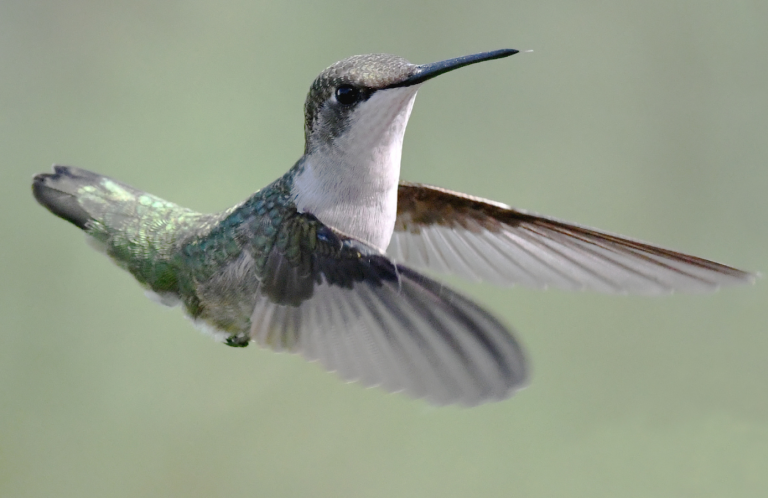Beloved Backyard Bandits: An Introduction to Chickadees
Even the most casual birdwatchers know and love chickadees. Among the most common visitors to backyard birdfeeders in North America, these social birds have a spritely manner and are notably comfortable around humans. But there's a lot more to these spirited birds than you might think. These survival experts have adapted to every forested habitat in the U.S., and they have some surprising tricks that help them thrive in challenging environments. Read on to learn more about these fascinating birds!
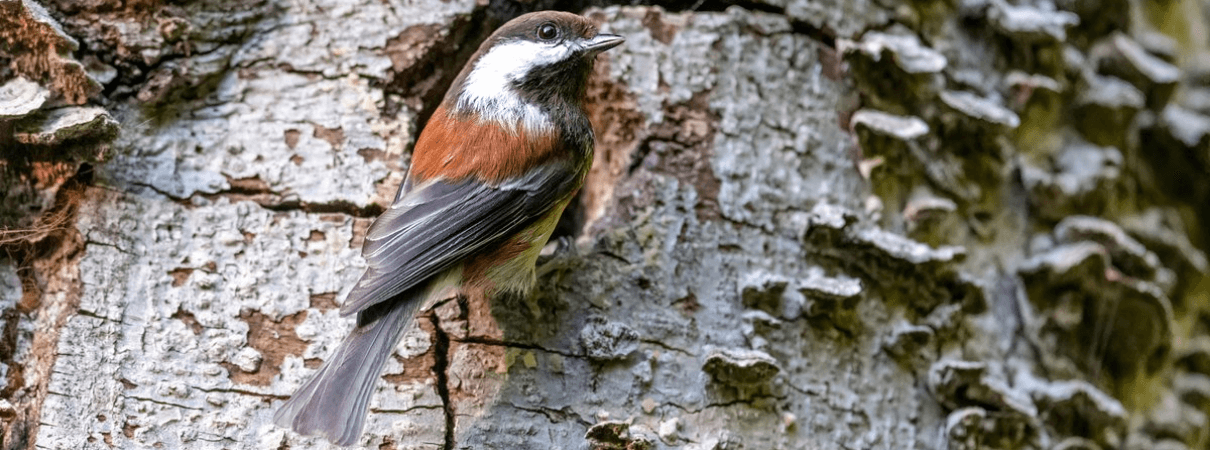
What Is a Chickadee?
Chickadees are members of the genus Poecile, part of the same songbird family, Paridae, as titmice. The Poecile genus includes 15 species, but only the seven that are found in North America are called chickadees; birdwatchers in other parts of the world know these birds as tits.
Ranging from four to six inches long, all chickadees share the same basic physical traits: white cheeks, dark crowns and throats, and gray wings and tails. (The term for a flock of chickadees is a “banditry,” apparently a reference to the fact that they look a bit like they're wearing black masks.)
Chickadees get their name from their easily recognizable “chick-a-dee-dee-dee” alarm call, which they use to alert each other to the presence of a potential predator.
In 2005, a team of scientists analyzed more than 5,000 recordings of chickadee calls and found this call is surprisingly sophisticated, with birds tacking on more “dees” to indicate a more serious threat. And it's only one of the sounds chickadees make — each species has a unique assortment of songs, gargles, and scolds.
Listen to a Black-capped Chickadee's “chick-a-dee-dee-dee” alarm call:
Chickadees, like titmice, are resident, not migratory, species, although they may range away from home in winter, likely driven by food scarcity.
The feeding behavior of most chickadee species changes with the seasons, too: They eat mostly insects and spiders in the summer but shift to a more seed-heavy diet in the winter.
Chickadees often tuck seeds into crevices for storage so they can return to eat them later, a behavior called “caching.” Remembering where the birds left these snacks requires a lot of brainpower — a 2002 study found that Black-capped Chickadees living in harsh environments, where caching food is more important, were better at finding stored food than were their cousins from more mild areas. These birds also had a bigger hippocampus, a brain region associated with spatial memory.
Come spring, chickadees nest in cavities, either excavating their own in dead trees, moving into holes carved out by other birds, or settling in human-provided birdhouses.
The Seven Chickadees

Carolina Chickadee (Poecile carolinensis)
Found in much of the south-central, Mid-Atlantic, and southeastern U.S., the Carolina Chickadee is one of the most widely recognized chickadee species. You can find them in a range of forested habitats, including suburban yards and even urban green spaces. Carolina Chickadees have been gradually expanding their range northward, but it's unclear whether this is due to climate change or the continuation of a trend going all the way back to the end of the last ice age.
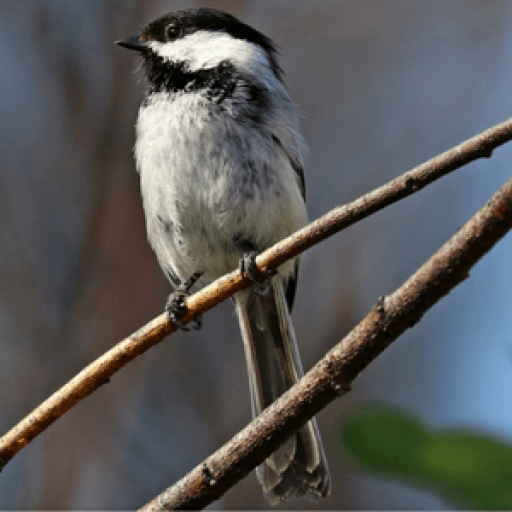
Black-capped Chickadee (Poecile atricapillus)
The most widespread chickadee species in the U.S., the Black-capped Chickadee ranges throughout the northern United States and Canada. Where this species overlaps with the Carolina Chickadee, the two can be tough to tell apart, but Black-capped Chickadees have longer tails, more white in their wings (roughly in the shape of a downturned hockey stick), a slightly broader throat patch, and a different song (a two-note whistle often written as “fee-bee,” as opposed to the Carolina Chickadee's four- to six-note song). Further confusing matters, the two species are even known to hybridize!
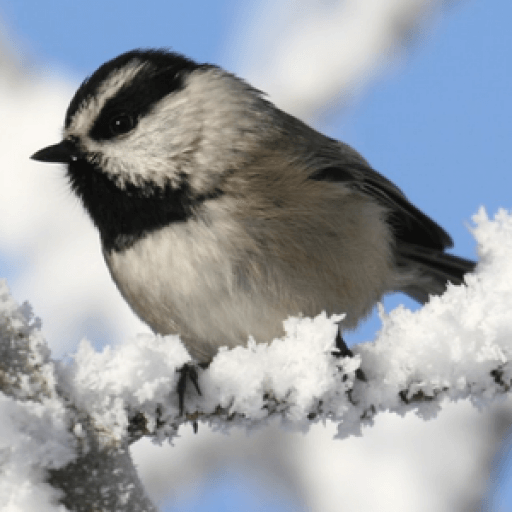
Mountain Chickadee (Poecile gambeli)
These chickadees are easy to recognize by the white “eyebrow” markings cutting through their black caps. They live in coniferous forests in the mountains of western North America, where there is much overlap with the range of their close cousin the Black-capped. The Mountain Chickadee's “chick-a-dee” call is noticeably hoarser than that of some of its relatives, sounding a bit like a Black-capped Chickadee with a sore throat.
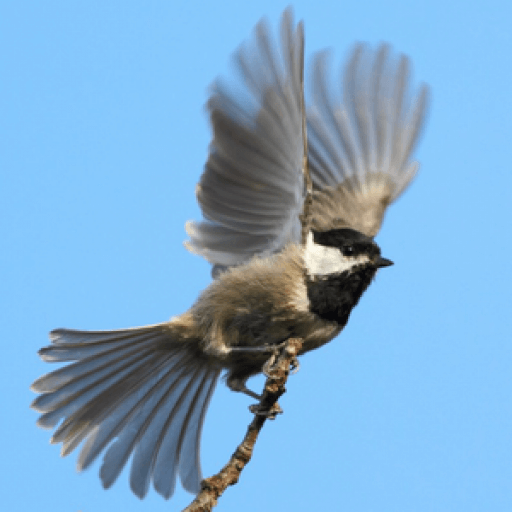
Mexican Chickadee (Poecile sclateri)
If you want to find this species in the U.S., you'll have to travel to one of two mountain ranges in the far-southeastern corner of Arizona or southwestern corner of New Mexico. There, they live in pine and spruce-fir forests. The most localized chickadee found in the U.S., the Mexican Chickadee looks almost identical to the Black-capped Chickadee, but the two species' ranges have no overlap. Unlike its relatives, the Mexican Chickadee exclusively eats insects, with no need to switch to seeds in winter due to the relatively mild climate in which it lives.
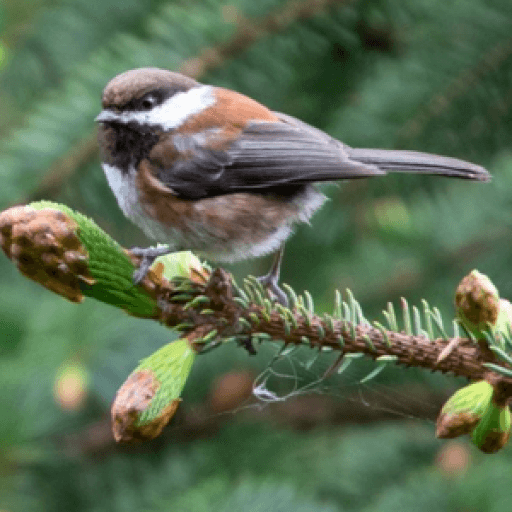
Chestnut-backed Chickadee (Poecile rufescens)
The smallest chickadees, Chestnut-backed Chickadees can be distinguished by their reddish-brown backs, just as their name suggests. Look for them in dense, shady coniferous forests along the West Coast of the U.S. and Canada, plus in inland mountain ranges of Washington, Oregon, and Idaho. The northern end of the Idaho panhandle is a great place to look for chickadees. On a lucky day, you might see this and three other chickadee species: Black-capped, Mountain, and our next species, the Boreal.

Boreal Chickadee (Poecile hudsonicus)
Recognizable by its brown cap, the Boreal Chickadee lives in its namesake boreal forests in Canada, Alaska, and the northern fringes of the conterminous (lower 48) U.S. states. Like some other boreal songbirds, this species periodically experiences “irruptions” during the winter. When this occurs, individuals wander far south of their usual range, probably in response to food shortages in their preferred habitat.
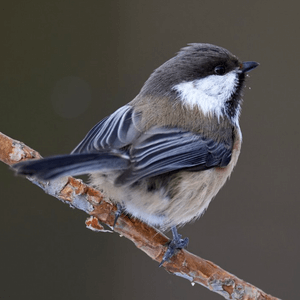
Gray-headed Chickadee (Poecile cinctus)
The rarest chickadee in North America, this gray-capped bird's Western Hemisphere range includes only Alaska and a corner of the Yukon. However, it's also widespread in Northern Eurasia, where it's known as the Siberian Tit. Gray-headed Chickadees are the chickadee species most vulnerable to threats such as logging, and their populations have been declining since the 1940s, although they're still officially listed as “Least Concern” on the IUCN Red List.
Chickadee Populations
While some chickadee species have experienced population increases in recent decades, others have not fared so well. Mountain, Gray-headed, and Chestnut-backed Chickadee populations, for example, have all declined. And they aren't alone.
The combined impact of invasive species, window collisions, habitat loss, and pesticide use, among other things, has contributed to staggering population losses in many bird species. In fact, over the last 50 years, North American bird populations have declined by 2.9 billion birds. This stunning drop accounts for nearly 30 percent of all birds in the United States and Canada.
How Can I Help?
Everyone has a role to play in helping birds rebound.
You can start at home by living a bird-friendly life. If you have a yard or any natural areas around your home, you can take steps to make these areas more chickadee-friendly by planting native trees and bushes.
Policies enacted by Congress and federal agencies, such as the U.S. Fish and Wildlife Service, have a huge impact on America's birds. You can help shape these rules for the better by telling lawmakers to prioritize birds, bird habitat, and bird-friendly measures. To get started, visit ABC's Action Center.
American Bird Conservancy and our Joint Venture partners have improved conservation management on 6.4 million acres of U.S. bird habitat — an area larger than the state of Maryland — over the last ten years. This is a monumental undertaking, requiring the support of many, and you can help by making a gift today.
 | Rebecca Heisman is a science writer based in eastern Washington. Her first book, which tells the scientific backstory of how we know what we know about bird migration, will be out in spring 2022. |





































